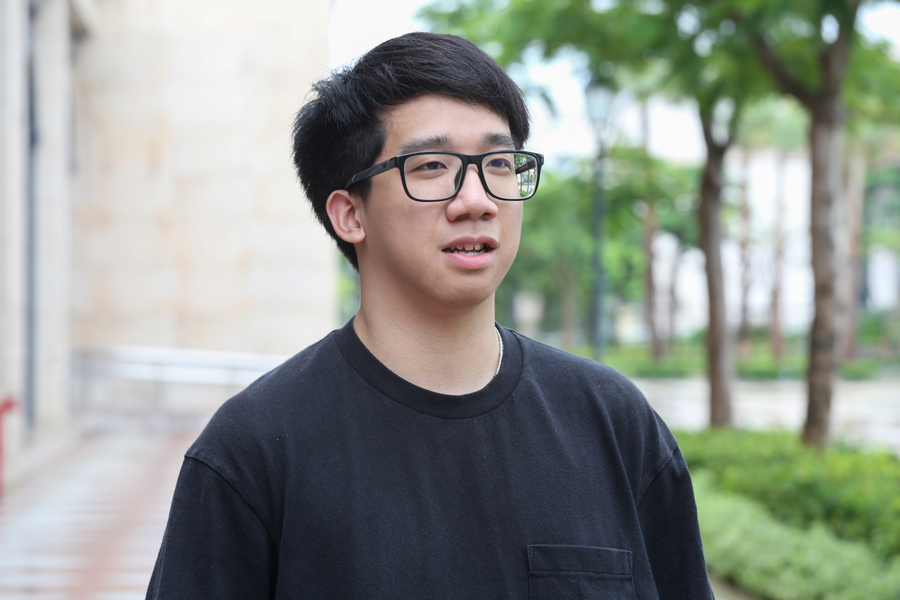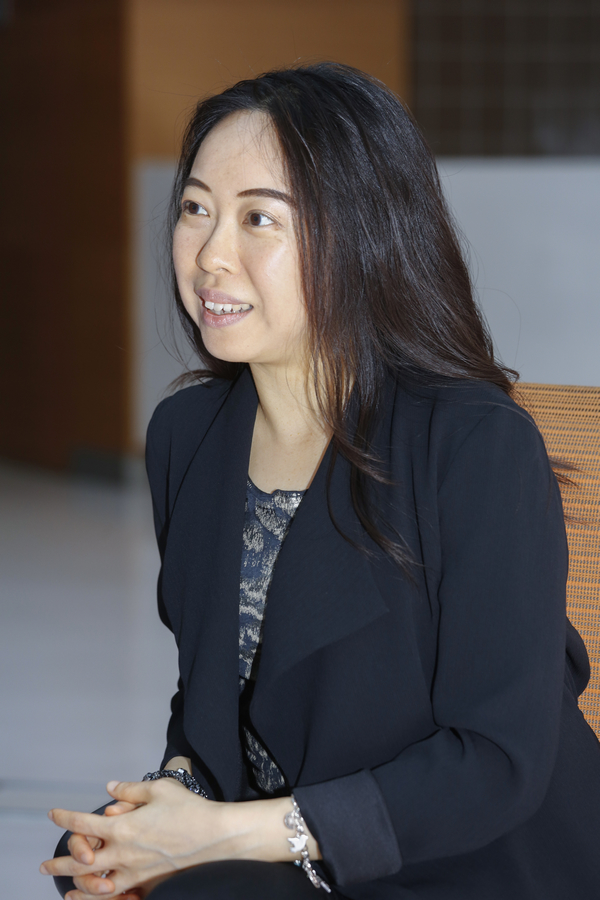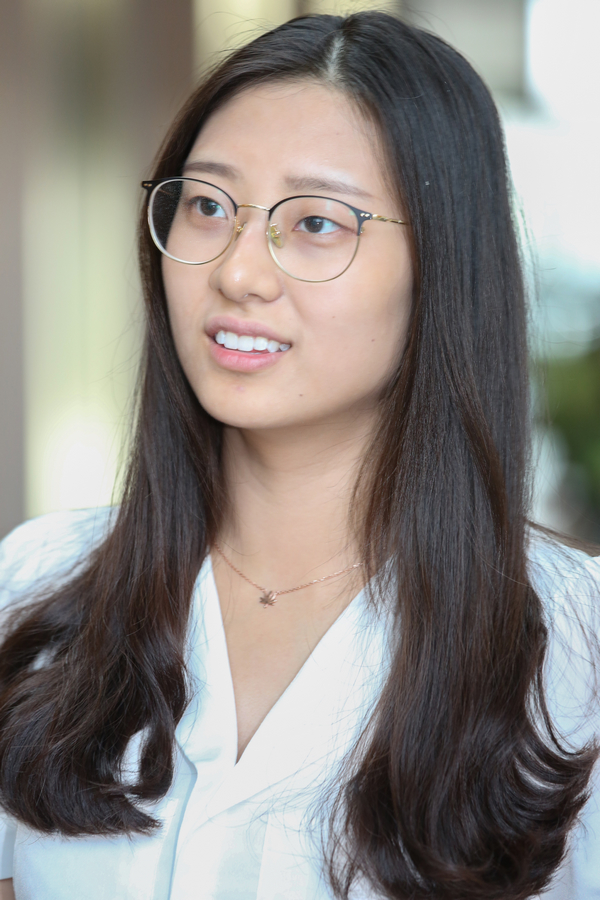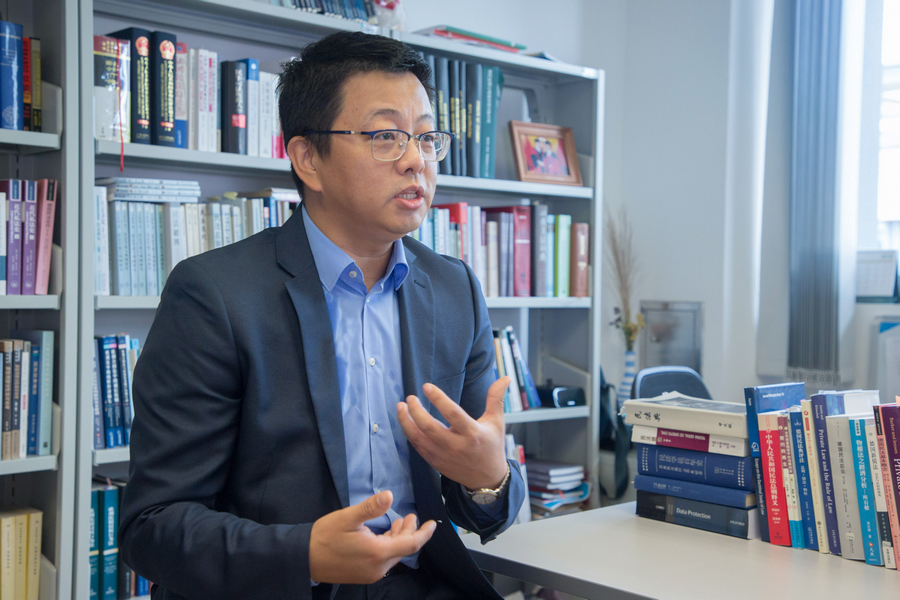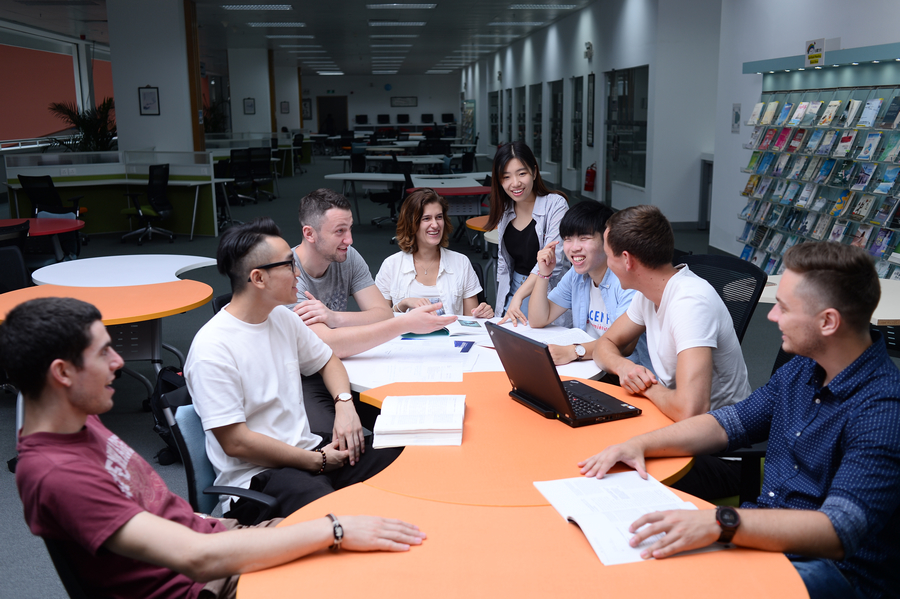From One-way Spoon-feeding to Two-way Communication
Cheong Wai, an English education major, remained on campus during the summer holiday. Apart from taking care of his work in the Students’ Association of the Faculty of Education, he also sometimes visited the library to borrow books. ‘When school was in session, I mostly read study-related materials, so I wanted to do some extracurricular reading during the summer holiday,’ he says. Three years ago, when Cheong first came to UM, he had a hard time adapting to the new mode of education. ‘In high school, teachers spoon-fed us knowledge, and students were at the receiving end of it, with very little interaction in class,’ he explains. ‘But here at UM it is the exact opposite. Many courses adopt a student-centred approach. Instead of one-way spoon-feeding, it is two-way communication. We are required to do more talking and discussing in class, so I have to spend more time preparing before class.’
Cheong recalls that at the end of his first class at UM, the professor asked the students to go home and study about 20 pages of English materials for discussion in the next class. ‘At first I felt it was a daunting assignment, but then I told myself, hey, you are a college student now, just bite the bullet and do your best. I reminded myself I couldn’t avoid challenging assignments forever,’ he says. Graduating from a Chinese high school but determined to become an English teacher one day, Cheong kept his nose to the grindstone in the past three years and made significant progress in English. But he says the bigger gain is that in the process he has become a selfmotivated learner. ‘In every class, the teacher would analyse problems with us and guide us to solve problems by ourselves. Many courses require us to complete group projects, so we have to meet and look for information after class. This helped me become a self-motivated learner,’ he says.
Teacher’s Role as the Guide
Student-centred learning, a concept proposed by Carl Rogers, the late American psychologist and one of the founders of the humanistic approach to psychology, emphasises the active role of the students in learning, with the teacher assuming the role as the guide. Katrine Wong, director of the Centre for Teaching and Learning Enhancement and associate professor in the Department of English, notes that different disciplines require different teaching methods. Many professors, while experts in their own fields, may not necessarily have received systematic pedagogical training. So when they try to implement the student-centred approach in their teaching, they need some time to adjust their teaching methods. Prof Wong explains that the student-centred approach emphasises the active role of the students in learning, and requires continuous adjustments to the teaching methods to suit the needs and learning styles of the students. She says, ‘With today’s technology, students can choose where and when they want to study. With the help of the internet, much of the information they need is just a click away. All these greatly facilitate self-directed learning.’ Prof Wong also stresses the importance of adjusting teaching methods to reflect changed circumstances. ‘The students you teach every year have different backgrounds and are at different levels, so it is important for teachers to adjust their teaching methods to reflect the changes, instead of sticking to a one-size-fits-all approach,’ she says.
This student-centred approach sounds great, but how do students, who are familiar with the traditional mode of education typical in high school, adapt to this new approach? Prof Wong explains that the student-centred approach is like a blender; if the user (in this case, the students) do not know which nutritious ingredients to put into the blender, they won’t be able to get the most out of the blender. She believes a freshman is bound to experience a transitional period where he needs to adapt to a new mode of education, but as long as he spends some time preparing before class, and makes a conscious effort to switch to a more proactive role in learning, he should be able to get used to it very soon. She also thinks that a combination of pre-class preparation and an interactive teaching approach in class would produce the best learning outcomes. ‘In some courses, teachers use electronic teaching aids such as Rain Classroom, UMMoodle, Mahara, and Kahoots, with noticeable results. With these teaching aids, you can quickly see the questions asked by the teachers and the answers provided by the students, so teachers can easily keep track of the students’ learning outcomes and make adjustments accordingly,’ she says.
Adopting an Open-minded Attitude
To Ng Jia Ying, a third-year student of biomedical sciences from Malaysia, the student-centred approach is one that is flexible instead of rigid. Thanks to the teaching methods she experienced in her high school, which were also flexible and innovative, it didn’t take long for her to get used to the mode of education at UM. In the last academic year, Ng took a general education course in the history of the Holocaust by Prof Glenn Timmermans from the Faculty of Arts and Humanities. Commenting on the teaching method Prof Timmermans adopts in this course, she says, ‘The course explores the relationship between the evolution of mankind and human nature. Prof Timmermans raised many penetrating questions and encouraged us to find answers to them. He also required us to look for information online after class. I think this teaching method suits this course perfectly, and we learned a great deal from it.’ Ng advises freshmen to adopt an open-minded attitude towards learning. ‘It’s like learning a foreign language. No matter how important you think it is, if you don’t try, your progress will slow down or come to a halt,’she says.
Motivating Students with a Question-oriented Approach
Prof Shui Bing from the Faculty of Law, who is the recipient of the 2018 Teaching Excellence Award, has won the praise of his students for his innovative teaching methods. For Prof Shui, a student-centred approach is not one that merely pleases the students. He says, ‘Teachers should prepare the students for their careers in the future. I think a teacher’s job is, first and foremost, to impart the most important knowledge in his area of expertise to the students. For instance, when I teach contract law, I can’t just talk about things that interest me, I must teach what I consider the most important knowledge, because I want to make sure that when my students start a career in law, they will have an arsenal of knowledge at their disposal. Second, I think It’s important to design the teaching method based on the characteristics of the discipline so as to better guide the students. It is extremely important to help students develop critical thinking skills, and the course content must serve this purpose.’
The core concept in Prof Shui’s teaching method is motivating students to think with a question-oriented approach. He likens the process to leading the students into a forest of knowledge and then leading them out. ‘After we walk them through it once, they will know how to navigate it by themselves in the future,’ he says. ‘They will know how to analyse problems, how to look for the underlying patterns and rules, and how to develop strategies. Guiding students with a question-oriented approach will make them realise studying law doesn’t have to be a boring business, it can be a lot of fun.’


